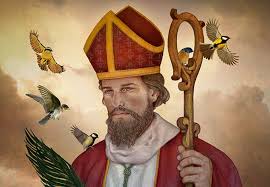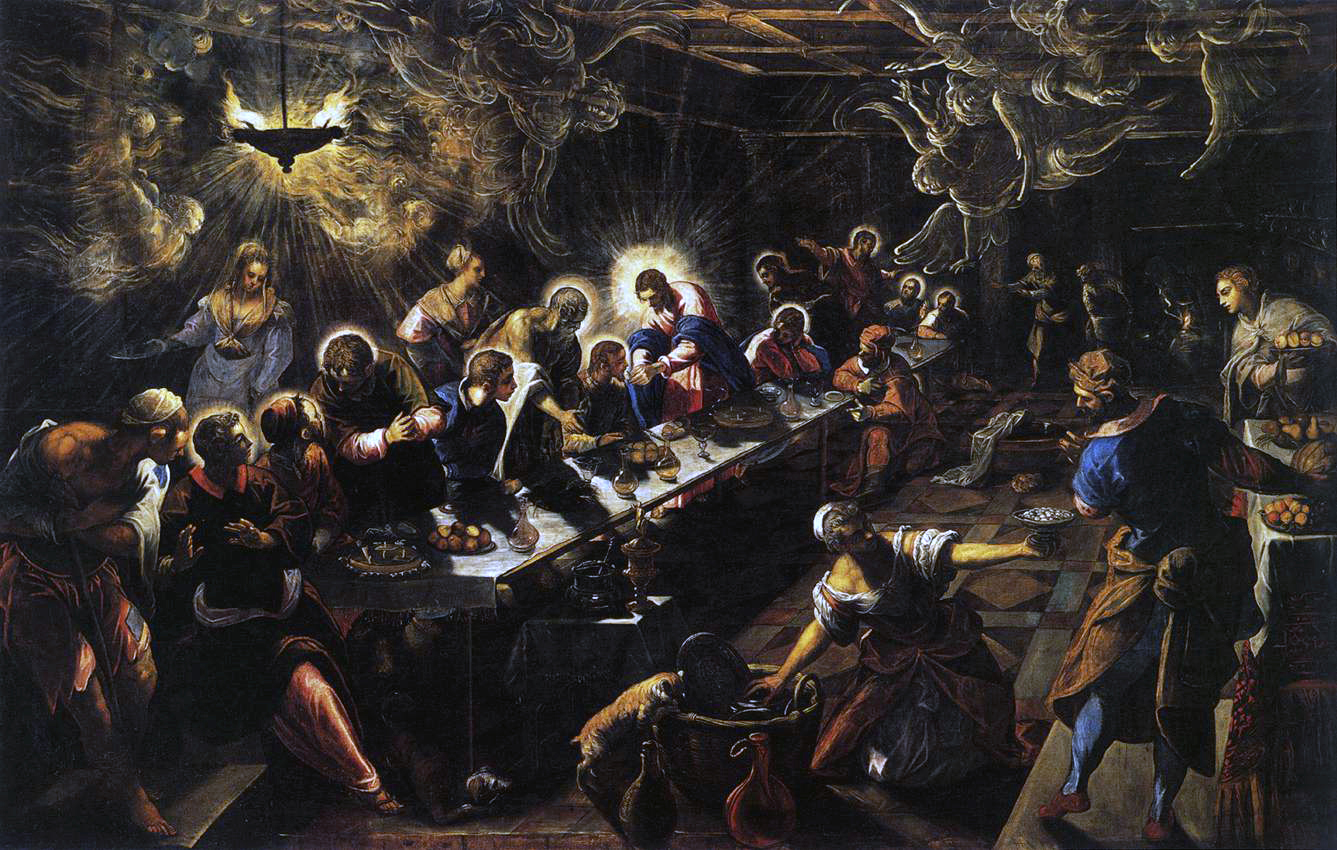The “African” Contribution to Christianity
The declaration of Christianity in Africa is a long-neglected merit; indeed, it provided much of what European Christian civilization developed and transcended into. Church Fathers such as Tertullian, Clement of Alexandria, Origen of Alexandria, Cyprian, Athanasius, and Augustine of Hippo were all of African origin.
(It is impossible to discuss the doctrines of Christianity without mention of these men and without using superlatives, even in the most common of dialogue.) Even from the scanty evidence that exists, archaeologists are convinced that Africa served as a major source of obtaining and preserving ancient forms of worship, culture, and biblical texts that can rival any other ancient Christian city. (This is a quite true statement that is rarely, if at all, glorified in the current Christian theatre of debate.)
Not surprisingly, no information, even legendary, exists that attests to the formation of the African churches. However, like her sister church in Jerusalem, Africa lays claim to extraordinary church models. The first source of information is in the New Testament. “Then an angel of the Lord said to Philip, “Get up and go toward the south to the road that goes down from Jerusalem to Gaza.” (This is a wilderness road.) 27 So he got up and went. Now there was an Ethiopian eunuch, a court official of the Candace, queen of the Ethiopians, in charge of her entire treasury. He had come to Jerusalem to worship 28 and was returning home; seated in his chariot, he was reading the prophet Isaiah. 29 Then the Spirit said to Philip, “Go over to this chariot and join it.” 30 So Philip ran up to it and heard him reading the prophet Isaiah. He asked, “Do you understand what you are reading?” 31 He replied, “How can I, unless someone guides me?” And he invited Philip to get in and sit beside him. 32 Now the passage of the scripture that he was reading was this:
“Like a sheep he was led to the slaughter,
and like a lamb silent before its shearer,
so he does not open his mouth.
33 In his humiliation justice was denied him.
Who can describe his generation?
For his life is taken away from the earth.”

34 The eunuch asked Philip, “About whom, may I ask you, does the prophet say this, about himself or about someone else?” 35 Then Philip began to speak, and starting with this scripture, he proclaimed to him the good news about Jesus.36 As they were going along the road, they came to some water; and the eunuch said, “Look, here is water! What is to prevent me from being baptized?” 38 He commanded the chariot to stop, and both of them, Philip and the eunuch, went down into the water, and Philip baptized him. 39 When they came up out of the water, the Spirit of the Lord snatched Philip away; the eunuch saw him no more, and went on his way rejoicing.”(Acts,8;26-39, NRSV ) In this passage, according to tradition, is the birth of the Ethiopian Orthodox Tewahedo Church founded by the Apostle Philip who baptized the Ethiopian. Tewahedo is a Ge’ez word (an ancient language of Ethiopia that is still in use and one of the OLDEST Christian languages in existence; it should be noted that this is a Semitic language!) which means “being made one “or “unified”. Currently, this word is used to suggest belief in the Unified Nature of Christ; that is, a complete, unblemished natural “union “of the Divine and Human Natures into One is self-evident to acquire salvation of humankind. Obviously, this is quite the departure of the Two Natures of Christ that is practiced by Roman Catholics, Protestants, and Eastern Orthodox. (There is a substantial difference in dogma among Eastern and Oriental Orthodox churches which I shall explain at another time. The Ethiopian, Coptic, Armenian, and Syriac churches belong to the Oriental family; the Greek, Serbian, Russian, and Bulgarian churches belong to the regular branch of Orthodoxy. To put it simply, the Oriental churches only acknowledge the first three Ecumenical Councils; they rejected the later councils that commenced after AD 451.)
Be this as it may, there is evidence to suggest (see the writings of Tertullian) that the gospels were preached in Punic and the Berber tongue. (Punic was a Phoenician language that was spoken in North Africa; Berber is a language that is still spoken today on the African continent.) Currently, there is no current evidence that may suggest that the New Testament was recorded in these languages; however, the earliest martyrdoms of Christians, according to Tertullian’s writings, were young African women being burned alive by Roman authorities who occupied these lands. In fact, the city of Carthage was a major location for executions of Christians by Romans. As the next century arrived, the infamous “Desert Fathers” (like Saint Anthony) began to cultivate the movement and practice of monasticism. Contrary to popular myth, Christian monasticism was not born in Europe; the roots of the idea predate the very compilation of the New Testament, all the way back to Africa! In addition to this, libraries, councils, Vetus Latina New Testament translations, methods of exegesis and biblical interpretations, all originate in the African theater. The harsh and intrepid responses to Gnosticism, Arianism, Marcionism, Pelagianism, and Manichaeism also first took place in Africa and extended their influence outside of the continent. The illustrious idea of synodical action was fully consolidated in the early African churches, not the European.
The next person of superiority to step into the picture is Saint Mark the Evangelist himself. According to Coptic Orthodox tradition, he founded the church in Egypt in AD 42. (The Coptic Church is over 1,900 years old and has made an excellent contribution to the study and preservation of New Testament manuscripts; the Septuagint, a Greek translation of the Old Testament, was made in Alexandria as well as the establishment of the Library of Alexandria, which in its zenith, housed over 400,000 scrolls! It is interesting to note that one of the methods used in obtaining this large collection was by way of scribes copying scrolls. This art was practiced MUCH later in Europe by monks who labored over the same process. It is said that the city of Alexandria possessed an ordinance that any merchant or important person who was in possession of scrolls, were compelled to surrender them so that they could be copied. The Oxford and British libraries still use this method to build their collections; when a book is published, copies are donated to libraries and universities; consequently, this is quite an “African” idea.) Egypt is identified in the Bible as a place of refuge for the Holy Family. “Now after they had left, an angel of the Lord appeared to Joseph in a dream and said, “Get up, take the child and his mother, and flee to Egypt, and remain there until I tell you; for Herod is about to search for the child, to destroy him.”14 Then Joseph got up, took the child and his mother by night, and went to Egypt, 15 and remained there until the death of Herod. This was to fulfill what had been spoken by the Lord through the prophet, “Out of Egypt I have called my son.”(Matthew,2:13-16,NRSV) In the Book of Isaiah, Chapter 19, verse 19 says, “On that day there will be an altar to the Lord in the center of the land of Egypt, and a pillar to the Lord at its border.” (Isaiah,19:19, NRSV) Surprisingly, when the Coptic Church was founded by Saint Mark during the reign of Emperor Nero, a large multitude of Egyptian natives freely embraced the Christian faith (as opposed to Greeks or Jews) without outside influence or compelled intervention. In less than 50 years, Christianity spread throughout much of Egypt with little trouble. Some of the EARLIEST New Testament manuscripts we have in possession were the results of the Egyptian Christians as well as the Ethiopians who were translating Greek and Aramaic (the native tongue of Jesus; there is no evidence to suggest that Jesus spoke Greek or Latin; however, I am certain he may have spoken phrases. How do I know that? Well, Jesus does exchange dialogue with Pontius Pilate, and I don’t believe Pilate would speak Aramaic to him; unless, of course, Jesus was provided with a translator; once again, no evidence to suggest this. A Roman Governor would not lower himself, even if he knew the tongue of the condemned, to speak in his language. This is quite a fascinating topic of that dialogue between Christ and Pilate. What language did they speak to each other in?) texts into Coptic and Ge’ez. Like Rome herself, in the early days of African Christianity, Carthage was the center of activity for those of the New Faith, as a result of the Punic Wars with Rome. It was this city in which the many early councils and discussions of the early Christians (as well as the Christian leaders) were to take root. Tertullian’s letters give a generous amount of detail into the early worship dynamics of a culture “intact” with Roman Church authority, but not necessarily abiding by it. However, it was in this early period that the early African churches commenced their centuries long struggle for identity and worship superiority that the (Christian) east would eventually become known for. Even as early as the 1st century AD, churches in the Sudan region were already flourishing at an impressive rate.
An unprecedented example of Christian contribution from Africa is the Nicene Creed itself. The Nicene Creed was adopted in response to Arianism (a doctrine which made Christ less than the Father, which, consequently, was a bitter departure of the soteriology at the time). The Coptic Orthodox Church still retains the tradition that Saint Athanasius was the author of the creed and was present at the First Council of Nicaea. It should be recollected among Protestants that he is the “Father of The Canon”; that is, Athanasius suggested that the 27 books of the New Testament are to be included and read by ALL Christians. Once again, these marvelous creeds and compilations of our faith originate in Africa. (Eastern Orthodox Christians are required to cite the Nicene Creed daily. I just stated the extraordinary purpose as to why.)
Last, certainly not least, is the beautiful Gospel Music of the African cultures. Most historians primarily base this music’s origins (mostly from an American perspective) to date as early as the 17th century. I hold, with zealous confidence, this dates as far back as the infancy of the African Church itself. Gospel music has roots in the black oral tradition that has origins that are centuries old; the repetition of words allowed those who could not read to engage with the rest of the congregation in worship; this is PRECISELY the same practice that the Eastern Orthodox Church still uses today, along with icons and chanting! (Once again, quite an African origin if you are discussing Coptic and Ethiopian worship conventions. This is one of the main reasons why there are so many icons in an Eastern Orthodox Church; it teaches those who cannot read the word of God! Very important!) Finally, the call and response action that is so dramatic in Gospel has underlying ties to ancient Christian worship. This also connects the clapping and foot stomping that is used to achieve the state of bliss during services. Remember when David danced “before the Lord with all his might”? “Wearing a linen ephod, David was dancing before the Lord with all his might, while he and all Israel were bringing up the ark of the Lord with shouts and the sound of trumpets.” (2 Samuel,6:14-15, NIV) Yes, this goes back to the ancient Israelites!
The purpose of this post was not to compare or contrast our sacred rites of worship; however, I am convinced that none of these topics are “fit” discussion in any church today! Why? Given some of the “fragmentary” demonstrations I have staged for this article, one cannot walk away from the contributions of African heritage that we, as Christians, ALL share in some form or another.
I shall end this article with a new cusp of Christian historicity that is worthy of an accolade. As is seems to turn out, regardless of the respected opinions of those men and women more learned in this area than myself, I cannot but conclude that I do not worship a Blond-Hair-Blue-Eyed Jesus; I do not worship a European Jesus; I do not worship a KING JAMES Jesus; I do not worship a Protestant, Roman Catholic, or Eastern Orthodox Jesus; however, I do worship a Middle Eastern Jesus! Europe can make no claim on the origins and customs of Jesus, Africa and the Middle East can and does.
Further Reading:
(All book titles available from Amazon)
How Africa Shaped the Christian Mind: Rediscovering the African Seedbed of Western Christianity by Thomas C. Oden (2010)
The Roman Illusion Volume One: Explores the African Origins of Christianity by
Amen Maat-Ra (2014)
African American Christian Worship by Melva Wilson Costen (2007)
Defending Black Faith: Answers to Tough Questions About African American Christianity by Dr.Craig Keener (A wonderful Biblical scholar)! (1997)
© 2024, Mark Grago. All rights reserved.




